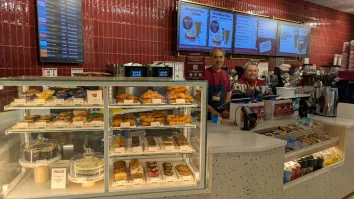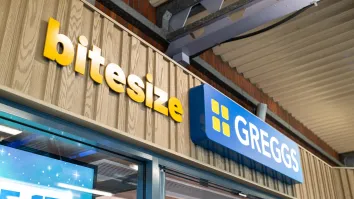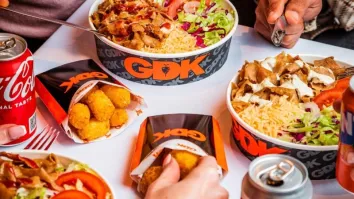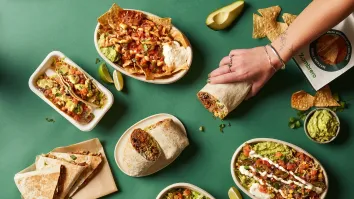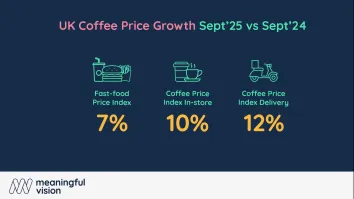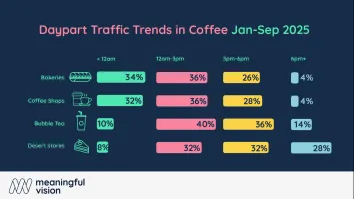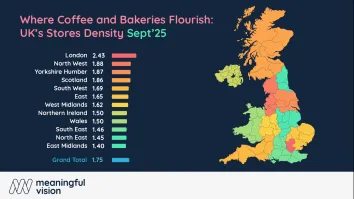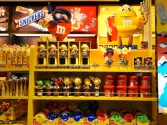
From breakfast booms to burger slumps: The trends reshaping UK fast food
Bakery and cafe chains grew led by Greggs, GAIL, and Pret A Manger.
The UK fast-food industry saw a surge in breakfast sales, a decline in burger chains, and shifting consumer habits in 2024, setting the stage for a highly competitive 2025.
Insights firm Meaningful Vision studied the dynamic market trends that shaped 2024 for the QSR industry and revealed some interesting data.
Winners and losers
Out of Home Consumer behaviour patterns showed significant variation across fast-food categories with bakeries and sandwich shops emerging as the star performers, enjoying a 4.7% surge in foot traffic.
This impressive growth was fuelled by the expansion of major chains like Greggs, Gail's, and Pret A Manger, capitalising on an enduring demand for convenient and affordable meal options, and highlighting the importance of restaurant location assessment and geographical sales area analysis as integral elements of a successful marketing strategy.
Ethnic fast-food also demonstrated robust growth, with a 2.6% increase in traffic.
Brands like Chopstix, Itsu, and German Doner Kebab played a prominent role in this segment's success, reflecting a burgeoning appetite for diverse culinary experiences. Coffee shops, whilst not experiencing the same explosive growth, maintained a steady, albeit slower pace.
The chicken segment requires a more nuanced understanding. Whilst overall traffic in 2024 declined by 1.9%, a resurgence in Q4 marked by a 1.1% increase in customer visits offered a glimmer of hope. This recovery can be attributed, in part, to the arrival and expansion of prominent American chicken chains, reigniting consumer interest in this category.
Conversely, the burger segment faced significant headwinds, experiencing a notable decline in foot traffic. This suggests that the once-dominant burger chains are facing increasing competition from other fast-food categories, emphasising the need for ongoing competitive analysis in the foodservice industry.
Shifting consumer habits
Consumer traffic patterns throughout the day underwent significant shifts in 2024. Morning visits witnessed substantial footfall growth, with the 6 AM - 9 AM slot increasing by 14%, and the 9 AM - 12 PM period by 7%.
These rises reflect a trend amongst consumers for on-the-go breakfast, fuelled by the steady stream of workers returning to the office after a prolonged absence, an obvious benefit to bakeries, sandwich shops, and coffee chains. Some burger outlets experienced increased morning sales thanks in part to expanding breakfast menus.
Lunchtime also saw a modest, somewhat slower increase in traffic. However, the late afternoon and evening periods tell a different story, with overall traffic declining.
The most significant drop occurred after 7 PM, with a substantial 12.3% decrease in footfall indicating a change in consumer dining habits during these later hours. These daypart dynamics underscore the importance of understanding deliveries and dine-in orders across different times of the day.
London leads in regional performance
London stands out with nearly 4% growth in overall fast-food traffic. The capital's high population density, strong commuter base, diverse food scene, and generally higher incomes contribute to the resilience of its fast-food market.
Other major cities, including Manchester, Birmingham, and Glasgow, experienced more moderate traffic increases reflecting stable but less rapid expansion.
By contrast, smaller cities and regional towns faced declining foot traffic, suggesting that economic pressures and shifting consumer spending patterns are impacting upon demand for fast-food more profoundly in areas beyond the major urban centres.
Looking ahead
As the UK’s fast-food industry braces for a fiercely competitive 2025, brands must quickly adapt to changing consumer preferences, economic uncertainties, and evolving market dynamics. data-driven decision-making and effective pricing consultancy & optimisation are essential tools in planning and executing a successful marketing strategy.
Meaningful Vision CEO Maria Vanifatova said the UK fast-food market remains highly competitive with burger chains still holding a significant market share. However, she said these chains are now experiencing pressure from other categories, especially chicken and ethnic fast-food.
"Chicken chains are poised for even faster growth this year, driven by the fact that chicken consumption is currently 2.5 times higher than beef in retail, yet beef still dominates the fast-food arena due to the popularity of burgers, indicating a great potential for chicken chains to capture more market share. Bakeries and coffee shops are another segment where we anticipate heightened competition and continued growth, supported by the ongoing return to office work," Vanifatova said.
"Ultimately, the winners in 2025 will be those operators who can effectively leverage data-driven insight into consumer behaviour, daypart dynamics, and segment trends. Menu innovation, strategic pricing, and targeted foodservice promotion will play an important role in sustaining interest and driving sales.”


